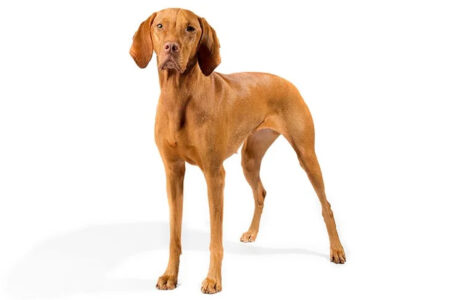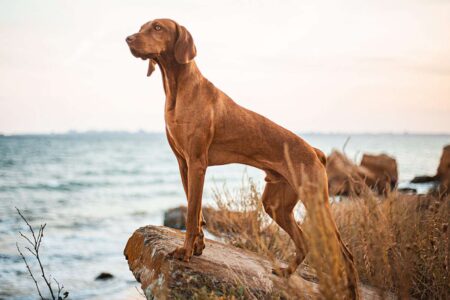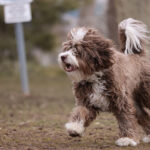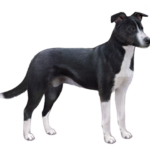The Vizsla is a versatile and lovable dog breed that originated in Hungary. Known for their distinctive golden rust color, these intelligent and energetic dogs are cherished by their owners for their loyalty, high trainability, and affectionate nature. Originally bred for hunting, Vizslas have adapted well to modern life as loving family pets and make excellent companions for active individuals or families.
In this article, we will delve into the rich history and characteristics of the Vizsla, exploring their appearance, personality, health considerations, and recommended care for potential owners. Whether you are a seasoned dog owner or considering bringing a Vizsla into your home for the first time, this article will provide valuable insights into this breed, helping you to make an informed decision and set your Vizsla up for a happy and healthy life.
Vizsla Dog Breed Profile
The Vizsla, also known as the Hungarian Vizsla, is a medium-sized hunting breed that originated in Hungary. They were originally bred to hunt and retrieve game, including birds and rabbits, making them excellent hunting companions. Today, they are still used for hunting, but they also make great family pets due to their friendly and affectionate nature.
Height:
The average height of a Vizsla is between 21-24 inches at the shoulder for males and 19-22 inches for females.
Weight:
The average weight of a Vizsla is between 45 and 65 pounds for males and 40-55 pounds for females.
Lifespan:
The average lifespan of a Vizsla is between 10-14 years.
Colors:
Vizslas come in various shades of golden rust, ranging from light gold to dark copper. They may also have white markings on the chest, paws, and tail.
Temperament:
Vizslas are known for their friendly and affectionate nature. They make great family dogs as they are loyal and love being around their owners. They are also highly energetic and require plenty of exercise and mental stimulation to prevent boredom and destructive behaviors. They can also be quite sensitive and do not do well with harsh training methods.
Grooming:
Vizslas have a short, smooth coat that is easy to maintain. They only require occasional brushing to remove dead hair and keep their coat shiny. They do not have a strong doggy odor and must only be bathed when necessary.
Exercise:
Vizslas are a highly active breed and need plenty of daily exercise to stay healthy and happy. They are a great choice for active individuals or families who enjoy hiking, running, or other outdoor activities. If not given enough exercise, Vizslas can become destructive or develop behavior issues such as excessive barking or hyperactivity.
Training:
Vizslas are intelligent and eager to please, making them easy to train. However, they can be sensitive and do not respond well to harsh training methods. Positive reinforcement techniques such as treats, praise, and playtime are most effective with this breed. Early socialization and training are essential for Vizslas to ensure they grow up to be well-behaved and well-adjusted dogs.
History of Vizsla Dog Breed
The Vizsla is a medium-sized hunting breed that originated in Hungary. Its exact origins are unknown, but it is believed to have descended from ancient hunting dogs used by the Magyars, a nomadic tribe that settled in Hungary in the 9th century.
The Vizsla was originally bred to be a versatile hunting dog, capable of tracking and retrieving game on land and in water. Its excellent sense of smell, speed, and stamina made it a valuable companion for hunters. The breed was also known for its loyalty and affection towards its owners, making it a popular choice for family pets.
Throughout the centuries, the Vizsla was highly valued by the Hungarian nobility and was often given as a gift to foreign dignitaries. The breed’s popularity spread to other parts of Europe in the 19th century, and it was recognized by the American Kennel Club in 1960.
During World War II, the Vizsla population was greatly diminished due to the destruction of Hungary’s infrastructure and the scarcity of food. It is estimated that only a few dozen Vizslas survived the war. To prevent the breed’s extinction, a breeding program was established in Hungary, and the Vizsla was crossed with other breeds such as the German Short-Haired Pointer and the Weimaraner.
Today, the Vizsla is still known for its exceptional hunting abilities, but it is also a beloved companion and family pet. Its friendly and energetic personality makes it a great addition to active households, and its intelligence and trainability make it a popular choice for various dog sports and activities.
Characteristics of Vizsla Dog Breed
- Energetic and Active: Vizslas are known for their high energy levels and require plenty of exercise and activity. They were originally bred to be hunting dogs and still possess a strong hunting instinct, making them excellent athletes and companions for those who enjoy outdoor activities.
- Intelligent: Vizslas are highly intelligent and have a strong desire to please their owners. They are quick learners and can excel in obedience training and other dog sports such as agility and tracking.
- Affectionate and Loyal: Vizslas are loving and affectionate dogs who form strong bonds with their owners and families. They thrive on human companionship and do not do well when left alone for long periods.
- Good with Children and Other Pets: With their gentle and playful nature, Vizslas make great family dogs and get along well with children of all ages. They can also coexist peacefully with other pets if properly socialized.
- Low Maintenance Coat: The Vizsla’s short, smooth coat requires minimal grooming. They shed, but not excessively, and regular brushing will help keep their coat shiny and healthy.
- Vigilant Watchdogs: Vizslas have an instinct to protect their homes and families and will alert their owners to potential threats. They make excellent watchdogs, but not so much guard dogs as they are not naturally aggressive.
- Sensitive and Sensitive: Vizslas are known to be sensitive dogs who respond well to positive reinforcement training methods. They can be easily upset by harsh training methods or being left alone for long periods, so it is important to provide them with plenty of love and attention.
- Prone to Separation Anxiety: Due to their strong attachment to their owners, Vizslas can be prone to separation anxiety if left alone for too long. They do best in homes where someone is home for most of the day or they can have access to companionship from other pets.
Appearance of Vizsla Dog Breed
The Vizsla is a beautiful breed of dog that has a sleek, athletic build. They are medium-sized dogs that typically stand 21 to 24 inches tall at the shoulder and weigh between 45 and 65 pounds. Vizslas have a short, smooth coat that can be any shade of golden, from light golden to dark red. They have long, hanging ears and a long tail. Vizslas also have a unique feature called the “eyebrow flash” where the hair above their eyes stands up when they are excited. Overall, the Vizsla is a stunning breed that is known for its beauty and elegance.
SEE ALSO: Bernedoodle: The Perfect Family Pet
Temperament of Vizsla Dog Breed
Vizsla dogs are known for being intelligent, affectionate, and active. They are loyal, loving companions who crave attention and affection from their owners. They are also known for being sensitive and gentle, making them great with children. However, they can also be high-energy and may need plenty of exercise and mental stimulation to stay happy and healthy. Vizslas are also known for being strong-willed and stubborn, so they may require some patience and consistency when it comes to training. Overall, Vizslas are friendly and sociable dogs that make great family pets. They are also very loyal and protective of their loved ones.
Cost of Vizsla Dog Breed
The cost of a Vizsla dog breed can vary depending on several factors such as the breeder, location, and lineage of the dog. On average, a Vizsla puppy can cost anywhere from $1,000 to $2,500. However, some breeders may charge more for champion bloodlines or show quality dogs. Additionally, the cost of owning a Vizsla also includes expenses for food, grooming, veterinary care, and training. It is important to be prepared for these ongoing costs before bringing a Vizsla into your family.
Health Conditions of Vizsla Dog Breed
- Hip dysplasia: Vizslas are prone to developing hip dysplasia, a condition in which the hip joint does not form properly, causing lameness and discomfort. This condition can be genetic, so it is important to get your Vizsla from a reputable breeder who screens for hip dysplasia.
- Hypothyroidism: Hypothyroidism is a condition in which the thyroid gland does not produce enough hormones, leading to symptoms such as weight gain, lethargy, and skin and coat problems. Vizslas are at a higher risk for this condition, and it can be managed with medication.
- Epilepsy: Some Vizslas may inherit a genetic predisposition to epilepsy, a neurological disorder characterized by seizures. This condition can often be controlled with medication, but it can be concerning for the dog and its owner.
- Eye problems: Vizslas can be prone to several eye problems, including progressive retinal atrophy (PRA), a degenerative eye disease, and cataracts, a clouding of the eye’s lens. Monitoring your Vizsla’s eye health and seeking treatment if needed can help prevent vision loss.
- Allergies: Like many breeds, Vizslas can be prone to seasonal and food allergies. Signs of allergies can include itching, redness, and skin irritation. Working with a veterinarian to identify and manage the allergens can help keep your Vizsla comfortable.
- Bloat: Bloat, also known as gastric dilatation and volvulus (GDV), is a life-threatening condition that can affect Vizslas. It occurs when the stomach twists, cutting off blood supply to the stomach and other organs. Immediate medical attention is necessary to save a dog’s life if bloat occurs.
- Von Willebrand’s disease: Von Willebrand’s disease is a genetic bleeding disorder that affects platelets and can lead to excessive bleeding from minor cuts or injuries. While there is no cure for this condition, it can be managed with medication and careful monitoring.
- Cancer: As with many breeds, cancer can occur in Vizslas. Some of the most common types of cancer in this breed include skin tumors, lymphoma, and hemangiosarcoma. Early detection and treatment can improve the chances of survival.
How to Care for a Vizsla Dog Breed
- Give plenty of exercise: Vizslas are high-energy dogs and require plenty of exercise to stay healthy and happy. They excel at activities like running, hiking, and swimming, and should be given at least an hour of physical activity each day.
- Socialize early: Vizslas are known for their friendly and sociable personalities, but it is important to socialize them early on with people and other animals. This will help prevent any potential behavioral issues or aggression in the future.
- Provide mental stimulation: In addition to physical exercise, Vizslas also require mental stimulation to keep them mentally sharp and prevent boredom. This can include activities like puzzle toys, obedience training, or agility courses.
- Feed a healthy diet: The Vizsla breed is prone to certain health issues such as hip dysplasia and bloat, so it is important to feed them a high-quality, balanced diet. Consult with your veterinarian for recommendations on the best food for your specific dog.
- Groom regularly: Vizslas have a short, smooth coat that requires minimal grooming. However, it is important to brush them at least once a week to remove loose fur and keep their coat healthy and shiny. They also only need to be bathed when necessary, as frequent bathing can strip their coat of natural oils.
- Provide proper training: Vizslas are intelligent dogs and respond well to positive reinforcement training methods. They are also highly sensitive and do not respond well to harsh discipline, so it is important to use gentle training methods.
- Practice good dental hygiene: Vizslas are prone to dental issues, so it is important to regularly brush their teeth and provide dental chews to keep their teeth and gums healthy.
- Regularly check for ticks and fleas: Vizslas have a short coat, making them more susceptible to ticks and fleas. Regularly check your dog for these pests and use preventative measures, such as tick and flea medication, to keep them free of parasites.
- Be aware of health concerns: As with any breed, it is important to be aware of any potential health concerns that Vizslas may be prone to, including hip and elbow dysplasia, bloat, and eye issues. Regular vet check-ups can help catch any potential health issues early on.
- Give lots of love and attention: Vizslas are known for their affectionate and loving nature and require a lot of love and attention from their owners.
SEE ALSO: Husky: Wolf-Like Dog
FAQs
Q. What is the personality of a Vizsla?
A. Vizslas are known for having sweet, affectionate personalities. They are often described as “Velcro dogs” because they enjoy being close to their owners and are happiest when they are by their side. Vizslas are also known for being very loyal and protective of their families.
Q. What breed class is a Vizsla?
A. The Vizsla is a breed of dog that falls under the Sporting Group. The American Kennel Club (AKC) classifies this group as breeds that were originally bred for hunting, pointing, or retrieving.
Q. Is the Vizsla a good family dog?
A. The Vizsla is often considered to be an excellent family dog. They are known for being very affectionate, gentle, and loyal to their families. Vizslas are also great with children, and they are often described as being “nanny dogs” because of their sweet and nurturing personalities.
Q. Is Vizsla a medium or large breed?
A. The Vizsla is considered to be a medium-sized breed of dog. They typically stand between 21 and 24 inches tall at the shoulder, and they weigh between 45 and 65 pounds.
Conclusion
The Vizsla is a highly energetic and affectionate breed that thrives on human companionship. They excel in a variety of activities, making them a versatile companion for active owners. However, due to their high energy levels and need for attention, they may not be suitable for all households. Proper training and exercise are essential to keep this breed happy and healthy. Overall, the Vizsla is a loyal and loving breed that can make a wonderful addition to the right family.


